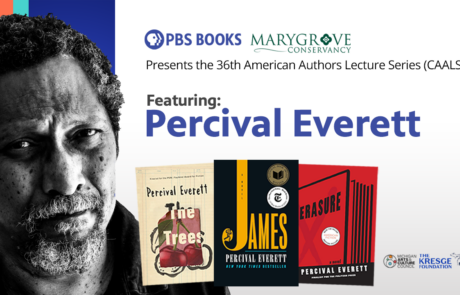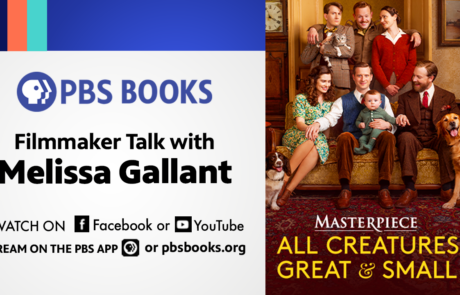
Buzz Aldrin poetically describes the beginning of the “space race” in a foreword written for science author Rod Pyle’s First On The Moon as “…those early, tentative forays into the heavens…” As we near the 50th anniversary of Aldrin and Neil Armstrong walking on the moon, and anticipate PBS programs like the American Experience documentary, “Chasing The Moon,” PBS Books has curated a list of “Read-alikes” to accompany not only your viewing experience, but to augment celebrations across the country, particularly in your local library. Many of these selections give compelling accounts of the decade’s worth of intensive preparations and technological advancements that were necessary for this extraordinary achievement, while other titles expand the frame to demonstrate our broadening understanding of the cosmos, as well as our continuing explorations.
PBS is planning a SUMMER OF SPACE lineup that brings five new programs covering different areas of space exploration combined with the best of PBS’ encore space-themed programming and PBS Digital Studios content. These programs, along with the recom- mended books on our list, effectively augment the nationwide theme of public library Summer Reading Programs & Events: “A Universe of Stories.”
You can read up on a Summer of Space with this Reading List. Contact your local library (or bookseller) if any title catches your eye. Each of these esteemed authors are taking a unique look at this moment in history, offering nuanced perspectives and analysis.
  | First On The Moon: The Apollo 11 50th Anniversary Experience Rod Pyle Rod Pyle’s narrative captures the enormity of the achievements by those in NASA’s Mercury, Gemini, and Apollo missions, but his research takes us further into the experience, having scoured NASA archives and private collections for artifacts and memorabilia from the mis- sions, as well as specially commissioned photo compositions from 2015. You’ll even see a candid photograph of the Apollo 11 crew, having a bit of breakfast on Earth right before takeoff. |
  | No Dream Is Too High: Life Lessons from a Man who Walked on the Moon Buzz Aldrin It’s no surprise that walking on the moon would be an unimaginably profound experience. Aldrin’s book channels the wisdom he’s cultivated not only from his famous 20 hours (spent walking on the lunar surface in 1969 with Neil Armstrong), but from the span of his 80+ years walking on the Earth’s surface, from his extensive training, from his fellow astronauts, and from his daily routine. |
  | Picturing Apollo 11: Rare Views and Undiscovered Moments John Bisney with J.L. Pickering (Photography) The images in J.L. Pickering and John Bisney’s collection widen the frame beyond the moon and give you a photographic story of all of the planning that led up to the launch, with a breathtaking collection of previously unpublished and recently discovered images. The photographs here capture everything from the media frenzy, to the excitement that gripped the citizens of the world, as well as the poignancy of the anniversary festivities that followed decades later. Picturing Apollois a photographic narration of the extraordinary scale of this daring mission. |
 | Black Hole Blues and Other Songs from Outer Space Janna Levin Levin is an astrophysicist and award-winning writer who has shed some light into the darkness of black holes, demonstrating that the only thing perhaps more mysterious than these matter-pulling regions are the gravitational waves that they produce. It’s one thing to imagine a black hole, but Levin’s book details the research done by three scientists to find out what happens when black holes actually collide! All of these spacetime ruptures must create some kind of sound, but what does it sound like. |
  | The Last Man on the Moon Eugene Cernan The late Eugene Cernan’s book broadens your perspective on the experience of an astronaut, while offering a thought-provoking meditation on how being the “last man” to walk on the moon is comparably as profound as being the “first.” Cernan is also famous for performing a “spacewalk,” a span of physical activity outside of a spacecraft. But this book shows you how much more there is to learn about “famous” astronauts, going beyond the bullet points of their achievements. |
  | Hidden Figures Margot Lee Shetterly You may have seen the award winning 2016 film adaptation, but we recommend reading Shetterly’s extensive telling of the exceptional mathematicians referred to as “humancalculators” who used pre-Computertechnology (i.e., pencils and post-war era adding machines), and particularly focuses on the skilled African American women who were called into service by America’s aeronautics industry at the start of the “space race.” |
  | Failure Is Not An Option Gene Kranz On the occasion of the 40th anniversary of the moon landing, Michael Collins, the command module pilot for Apollo 11, downplayed the heroism of astronauts, grounding it (no pun intended) as training and preparation leading to a job well done despite the daunting task at hand. When you return to this now-famous quote by Flight Director Gene Kranz though, and you read how throughout much of the progress, from the Mercury program, toGemini, and finally to Apollo, proceededwith a very grave danger of failure threatening at every inch of that progress, it’s hard to avoid the temptation of the ascribing hero-status. |
 | Sally Ride: America’s First Woman in Space Lynn Sherr Physicist, engineer, and astronaut Sally Ride didn’t just break a glass ceiling, she broke through the stratosphere. Long overdue, 25 years after the start of the “space race,” Sally Ride famously became the first American woman in space. Sherr writes, “In a fraternity of crew cuts, she was a breath of fresh feminism…” Sherr blends journalism into compelling narrative with her portrayal of Ride’s life, expanding the frame before, after, and beyond her famous first flight in the early 1980’s. |
  | Rise of the Rocket Girls Nathalia Holt In the late 1940’s, a highly skilled group of mathematicians and scientists worked on a project that essentially laid the groundwork for NASA’s Jet Propulsion Laboratory. Using only pencils, paper, and their keen mathematical minds, these women plotted the technical course needed to move from missile technology, toward a viable means of propelling a manned craft far enough and fast enough so as to leave the atmosphere. Holt’s extensive research introduces readers to these women, along with interviews with living members of the team, and shines a light on their overlooked contributions to the decades-long journey toward a lunar landing. |
  | The Eagle Has Landed Jeffrey K. Smith The 2012 Neil Armstrong biography First Man delves into the landing, while also giving you a full portrait of the astronaut’s life (dramatized in a recent film starring Ryan Gosling). But Smith’s book is more a biography of everyone who played a role in the Apollo program leading up to that dramatic moment, when a transmission came 230,000 miles away to confirm that historic landing. Smith’s detailed book takes stock of the wider impact that the Space Race had on innovations in technology and exploration. |










